Thanks for your support! If you make a purchase using our links in this article, we may make a commission. And, as an Amazon Associate, I earn from qualifying purchases. See the full disclosure here.
Want to use solar power in your van but don’t want to deal with the hassle of installing a full solar system? Lucky for you, there’s a perfect solution: solar generators for van life.
A solar generator gives you everything you need to utilize solar power without a full solar install with batteries, battery monitors, inverter, etc. Simply attach a solar panel, charge the solar generator up, and use it to power all your devices. Or if it’s a cloudy day, you can even charge it with other sources of electricity, such as shore power.
So, what are the best solar generators for van life? And how do they work? Let’s take a look.
What is a Solar Generator for Camper Vans?
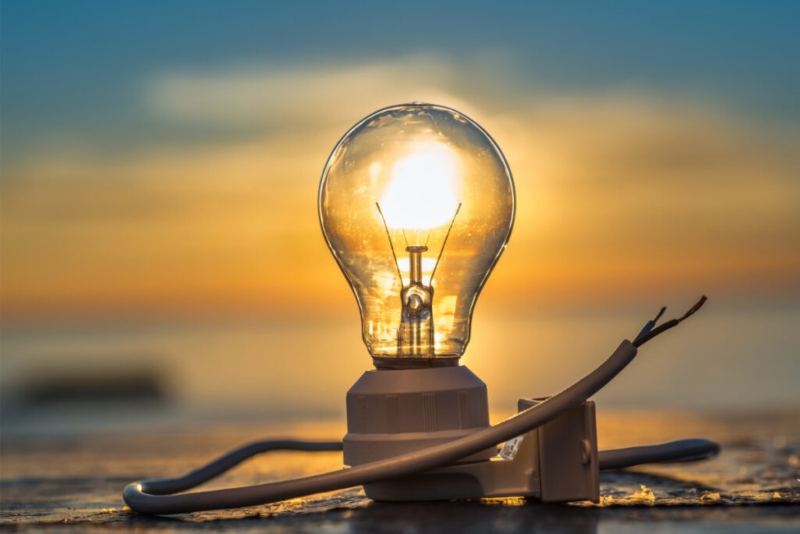
Despite the name, a solar generator isn’t really a generator. In fact, it doesn’t even require solar power. Instead, a solar generator is actually a battery, inverter, charge controller, and battery monitor rolled into one. You can think of it as being like a battery bank to charge a cell phone, but much bigger and more advanced.
Not sure what an inverter is? Check out our article called RV Converters & Inverters Explained to learn all the details.
The solar comes in because solar generators can be charged using solar panels. But you can charge solar generators in other ways, such as off your van’s power sources or shore power.
Solar generators usually come with an AC charger. Solar panels and DC chargers must be purchased separately. You can learn more about buying the correct solar panels to charge your solar generator in our article called Beginners Guide to RV Solar Panels.
Once it’s charged, your solar generator’s battery provides power to all your favorite devices. The inverter inside can convert the internal battery’s 12v DC electricity to 120v AC.
This allows you to plug in your electronics like computers and phones. For DC devices, circular outlets that resemble car cigarette lighter outlets draw power directly from the solar generator’s battery at 12-volts.
The other components of your solar generator, the charge controller and battery monitor provide safety and longevity to your battery. They ensure your battery charges at a safe rate and doesn’t become overheated or overcharged.
How Many Watts of Solar Do I Need for My Camper Van?
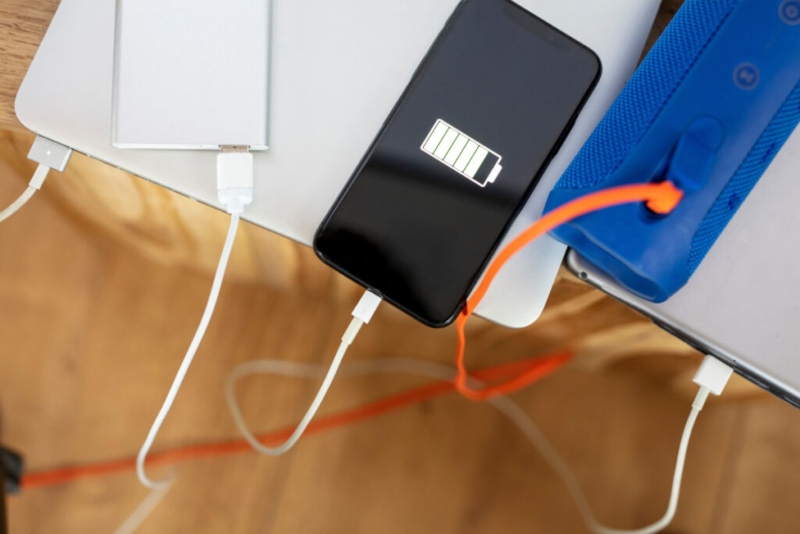
Averaging Your Power Needs Through Boondocking
To find out how many watts of solar you need for your camper van, you’ll have to find out how much power you use. The most enjoyable way to do this is to go boondocking a few times.
Take your camper van out and use all your devices like you normally would, with your batteries fully charged. Using a battery monitor, track your power usage in amps. Ideally, you should do this a few times since each RV trip will have different power needs (i.e., colder days, using times you need to use your mobile devices more, etc.).
After your trips, you can average out your numbers to see how much power you’ll need. For every 30 amps you use, you’ll need 100-watts of solar power. The watts of your solar panels are cumulative, so if you need 300 watts, you can use one 300W panel or three 100W panels.
Use an Online Calculator to Determine Your Power Needs
If this method isn’t an option, you can also estimate your power needs with an online calculator.
First, decide on all the electronics you’ll power with your solar generator. Then find the wattage of each device. This is usually listed on the device’s back, bottom, or power supply.
Next, estimate how many hours a day you’ll use each device. From here, you can do the calculations by hand. You multiply the wattage by the time to get watt-hours, then divide that number by the voltage to get amp-hours.
(Total Wattage x Hours of use per Day= Watt-Hours) / Voltage = Amp-Hours
However, it’s much easier to use an online calculator. There are many solar calculators online that are easy to find. Most will ask you to enter in data like:
- The wattage of each device
- How many hours you’ll need to use the electronic
- The wattage level of your solar panels
- What the storage capacity is of your house battery/solar generator
- Other relevant information
Once the data is added, the calculator will crunch the numbers. You might want to use 2 or 3 calculators the first few times until you’re certain you’re using them correctly and functioning well.
How Big of a Solar Generator Do I Need?
We’ve answered the question of how much solar power you need. But how big of a solar generator do you need when it comes to power storage capacity?
Simply (and obviously), you’ll want a portable power station that meets your energy needs. That’s a battery that can provide the amount of power you need in a day without running out of charge.
Calculating this is the same process we used to size our solar panels.
- Find the wattages of all your devices, and estimate how many hours a day you’ll use them.
- Add everything up to get your estimated watt-hours per day (use the same calculator you found to determine your power needs).
- Choose a solar generator whose capacity meets or exceeds this number.
As a general rule of thumb, if you only want to power or charge a few small devices for a few hours a day, you can use a generator under 500Wh. This includes powering LED lights, charging phones and tablets, and using a small TV.
If you want to power devices like bigger TVs and small fridges, you’ll want at least 1000Wh of battery capacity. This is also a good option for powering many small devices.
If you want to use power-hungry appliances like microwaves or power tools, you’ll want the biggest solar generators available. The largest solar generators usually have around 2000Wh of battery capacity. This amount of power will fulfill the needs of some high-consumption devices for a good amount of time.
Also, keep an eye on your solar generator’s power output. Usually, a solar generator will output continuous power more or less equal to the battery capacity. But, in some cases, the generator will output more, so make sure you research this before you purchase your solar generator for your van life adventures.
Besides continuous power, many devices require “surge” power when they first turn on. Check your solar generator’s peak power ratings to ensure it can supply the extra boost of power your electronic device needs.
How Long Do Battery Powered Generators Last?
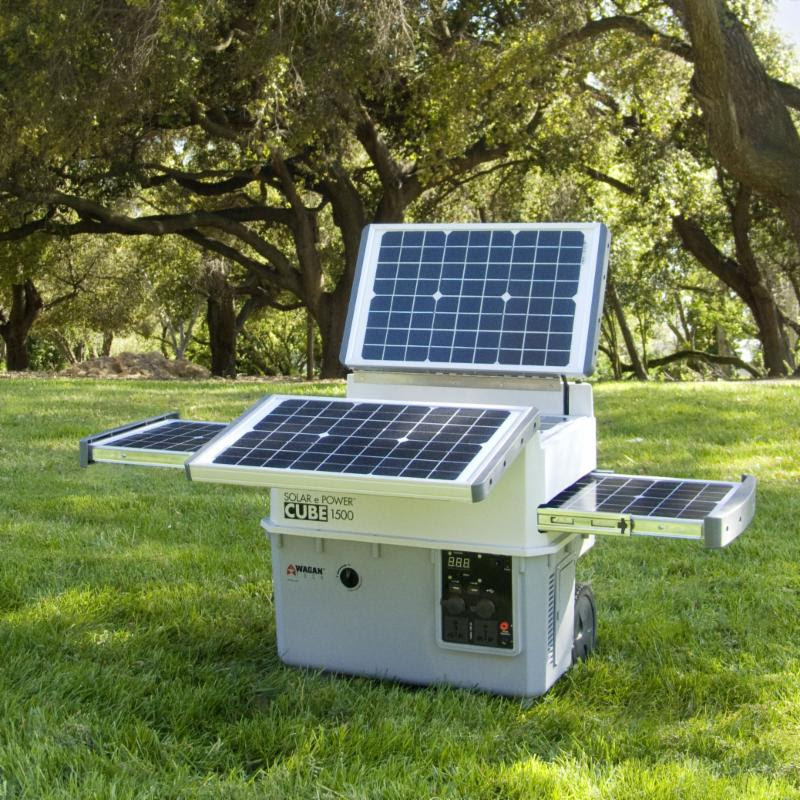
A solar generator for van life is no small investment. You can spend hundreds or thousands of dollars. So, of course, you want it to run as long as possible. But how long do solar generators last?
The lifespan of your generator will depend on a few factors. For one, a lithium battery generator will have a longer lifespan than one with a lead-acid battery. A lead-acid battery has a lifespan of two to five years, while some lithium-ion batteries can last up to 10 years.
Another factor is whether or not your solar generator lets you replace the battery. This can extend your solar generator’s lifespan to 15 years or more.
3 Methods to Charge a Portable Solar Generator?
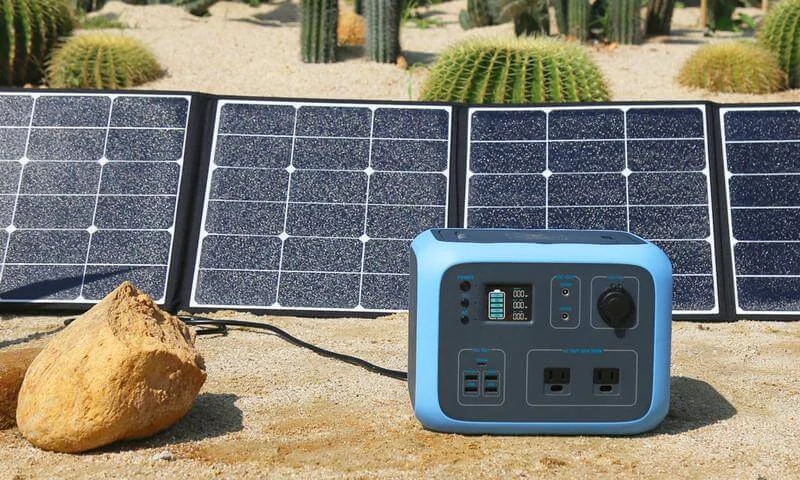
One of the great things about solar generators for van life is their flexibility!
Solar generators for van life can usually be charged with three different methods. This gives you plenty of flexibility to get charged up no matter where you are or the weather conditions.
1. Solar Power
The first and most obvious way to charge your solar generator is solar power. You can connect a solar panel or an array of them to a solar generator to refresh the battery. This is a great way to charge your generator with clean, renewable energy anywhere there’s sunlight.
2. Car Charging Through the DC Outlet
Another way to charge your solar generator is through the 12v DC outlet in your car. The “cigarette lighter,” the circular outlet, draws power directly from your vehicle’s battery. These chargers either come standard or are available as an add-on.
This method allows you to charge your generator while on the road. It’s a great way to juice up your solar generator in your camper van while traveling.
3. AC Charging
The final charging option for solar generators is AC charging via a shore power connection or other AC power source. This method lets you charge a generator at home or from a campground by plugging it into a standard 110v outlet. This is also usually the fastest way to charge your solar generator.
In addition to these three methods individually, many solar generators will let you combine charging methods for faster charging. By combining solar power and DC car charging, your battery can be charged in much less time.
Pros & Cons of Portable Solar Generators
Like anything else, a portable solar generator has its pros and cons. Let’s look at all the advantages of solar generators and their downsides.
Pros of a Portable Solar Generator
- Buying a solar generator is much easier than installing a full solar system. It has everything you need except a solar panel in one simple package. Simply attach a solar panel or other charging sources, and you’re good to go.
- You can take your portable solar generator with you. The charging source is stuck in your camper van’s battery bank with a solar system installed in your van. But with a solar generator, you can take that power source with you even if you leave the Class B motorhome.
- Because of their portability, you can also use solar generators as an emergency power source in a traditional home. So even if your home experiences a power outage, you’ll still have a source of electricity.
- Solar generators are highly flexible. You can charge them with solar in sunny conditions, use your vehicle’s batteries, or shore power to charge. You can charge your solar generator no matter what power sources.
- Solar generators are easy to use, require little maintenance, run quietly, and don’t need fuel. This makes them a much more convenient power source than a traditional gas generator.
Cons of Portable Solar Generators
- Solar generators are fairly expensive. You have to weigh the complete value a larger solar generator would be versus a low-level installed solar system. Based on your RV lifestyle, would a solar generator for your van life be better or an installed solar system if they cost the same?
- Solar generators aren’t as powerful or expandable as a full solar system in your camper van. You’ll be limited in your battery capacity and power output compared to the options for a full solar system.
- Unlike gas generators, which can provide power on demand, a solar generator must be charged first. Depending on your charging method (and the weather conditions if you use solar), getting a full charge can take a long time, as long as 24 hours in some cases.
8 Things to Look For When Buying a Solar Generator?

When shopping for a solar generator for van life, there are several factors and features to consider. Let’s take a look at each of them.
1. Running Watts (Power Output)
One of the most important things for your solar generator is how much power it can output continuously. This will ultimately decide which and how many devices you can power. If the wattage of your devices exceeds the running watts, you won’t be able to power all your devices.
You’ll find the running watts listed somewhere in the generator’s specifications. This value will commonly be the same (or close to) the battery’s capacity. For example, a 500Wh battery will usually have 500 running watts.
In addition to running watts, the peak wattage will be listed and should be considered.
Many devices need extra power when they first startup (often called “surge” power) and then draw a lower amount of power for the rest of the time they’re active. This is most common for devices with AC motors, like fridges and microwaves. These devices should list the surge draw somewhere in their specifications. Make sure your solar generator can handle the requirements.
2. Watt-Hours (Battery Capacity)
The battery in your solar generator will have its capacity listed in watt-hours (Wh). This is how much power your generator can provide on a single charge and help you estimate how long you’ll be able to charge your devices. For example, with a 500Wh generator, you can power a 100W device for about 5 hours.
This is approximate, and you might not get exactly that much charge. It’s a good rule of thumb to help you estimate your needs. If you have power-hungry devices and/or want to power them for longer, you’ll need a larger battery capacity.
3. Recharge Time
Different solar generators will charge at different rates. A faster rate will let you get back to using your generator faster. In general, charging rates will be listed in the specifications for your solar generator.
Each charging method will, of course, have its own charge time. These times may also be listed for combined charging methods when available. Solar charge rates vary depending on the available sunlight.
In general, charge times for solar generators range from 4 hours to 24 hours. Charging with an AC adapter will usually be the fastest, while solar is the slowest.
4. Inverter Type
One of the essential components of a solar generator is the inverter. The inverter takes the DC power from the battery and converts it to AC power that can be used by your devices.
There are two different inverters: modified sine wave and pure sine wave. Pure sine waves accurately recreate “natural” AC power and can be used to power any device (even sensitive medical equipment).
Modified sine wave inverters create a rougher approximation of AC power that doesn’t work as well with sensitive devices. This results in a cheaper inverter, but it should only be used to power simpler electronics like lights.
Most solar generators use a pure sine wave inverter which is the recommended option for most people. But if you only need to power simple devices and want to save some money, look for a solar generator with a modified sine wave inverter.
5. Battery Type
The batteries in solar generators are the same ones you find in a vehicle, like in a car or your camper van’s house battery bank. There are two different batteries: lead-acid (LA) and lithium-ion (LI).
Lead-acid batteries are the older technology but still the most common type of battery for automotive applications. Because they use old, fairly simple technology and cheaper materials, lead-acid batteries are very affordable. But they can only be discharged to about 50% of their full capacity. LA batteries recharge more slowly and need to be replaced every few years.
Lithium-ion batteries are the newer technology with many advantages. These batteries can be discharged up to 80% or more, recharge faster, operate more efficiently, and last 10 years or more. The downside of lithium is that they’re more expensive. Yet the higher cost is evened out by not having to replace them as often.
Because of their advantages, most solar generators use lithium-ion batteries. But a generator with a lead-acid battery can save you money, and despite their downsides, lead-acid batteries are still effective and reliable.
6. Size and Weight
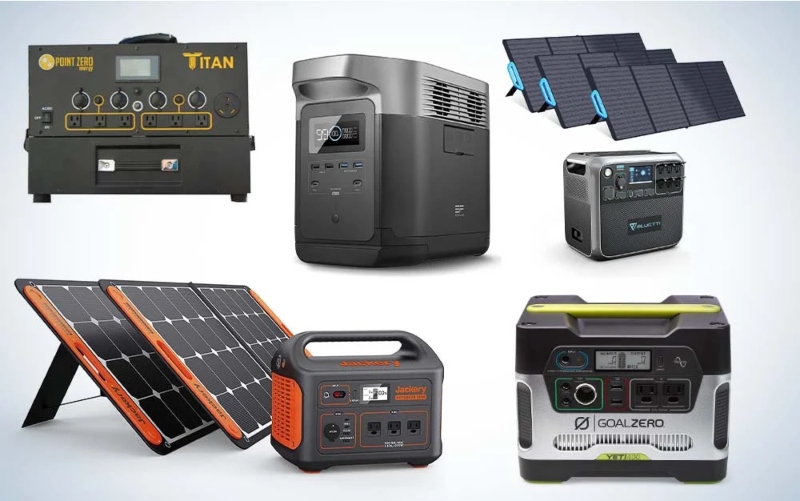
The size of your solar generator is important for a few reasons. You’ll need to have space for it in your camper van. Compare your available space to the dimensions of the solar generator you want to buy so you’re sure you have somewhere to put it.
There’s a good chance your solar generator won’t just stay in one spot – this is where the weight becomes a factor. Portability is a huge advantage of solar generators, but the heavier your generator is, the more difficult it will be to take it with you on any outdoor activity.
If bringing the solar generator on hikes or other excursions is important, look for a lightweight generator. If your generator will mostly stay in your camper van or close to it, a heavier generator won’t be an issue and will have a higher capacity too.
7. Outlets and Ports
Being able to charge your solar generator in multiple ways is super convenient. But you’re going to have to plug your devices into your generator to use that charge.
Solar generators will have a variety of ports and outlets. You should carefully check to see if you’ll have enough ports and outlets for what you want to power and the right kinds.
The most common types of outlets on solar generators are:
- Standard 110v AC outlets
- 12v DC car outlets (a.k.a. a “cigarette lighter” outlet)
- USB-A ports (the bigger, older, single directional type of USB)
- USB-C PD ports (the smaller, newer USB that plugin either way)
There are also other, less common types of outlets you’ll find:
- 30 amp AC outlet (a.k.a. a “shore power” outlet; this is the large, 3-pronged plug 30-amp RVs use when plugging into campsite electric utility posts)
- Other types of DC outlets for less common cables, such as coaxial power connectors
- Wireless charging outputs
8. Extra Features
Everybody loves a little something extra. Those extra features can help you decide on one solar generator over another. There are a variety of extra features you can find on solar generators. One of the best features to find is expandability.
Many solar generators will let you connect extra batteries to your generator to increase capacity. If you add batteries, they must be of the same type as the battery in the generator. In other words, you can’t connect a Jackery 750w to a Yeti Goal Zero 200w; they must be the same brand and model.
Another thing to look out for is what chargers are included with the device. Some solar generators will include a DC charger and an AC charger, but you’ll have to buy the DC charger separately for others. In some cases, the manufacturer may have a more powerful charger available that can charge it faster than the normal one.
Some solar generators are also available in kits that include a solar panel. Often, these will be portable, “briefcase” style solar panels. This is a huge advantage because you can get everything you need to use your generator and save money.
The 6 Best Solar Generators for Camper Vans
There are plenty of great options for solar generators for van life. We’ve collected the best generators of every size to help you find the right one for your van.
Let’s look at the six best solar generators for camper vans.
1. BougeRV ROVER 2000 Portable Power Station
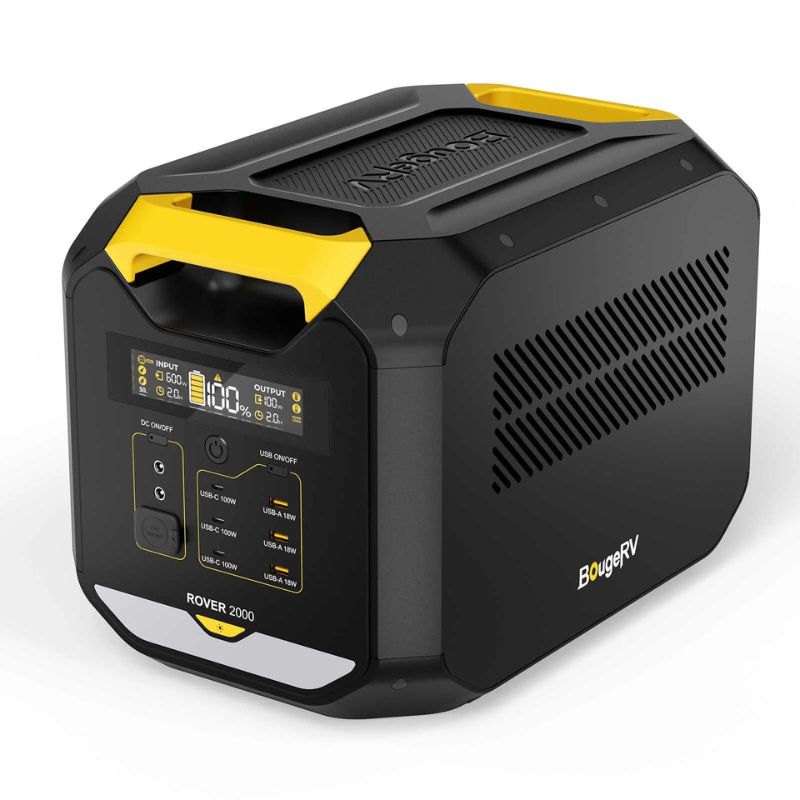
Power your next trip with the BougeRV ROVER2000 portable power station. The ROVER2000 utilizes a semi-solid state battery for power and longevity.
The pure sine wave provides 2200W continuous and 4000W surge power this portable power station won’t let you down.
With 5 AC outlets, 3 USB-C, 3 USB-A, and a DC outlet you will have no problem finding a spot for all your power needs.
One great feature of this power station is the quick charge feature. With AC power the unit can be fully charged in only 1.5 hours!
2. Jackery Explorer 1000 Portable Power Station
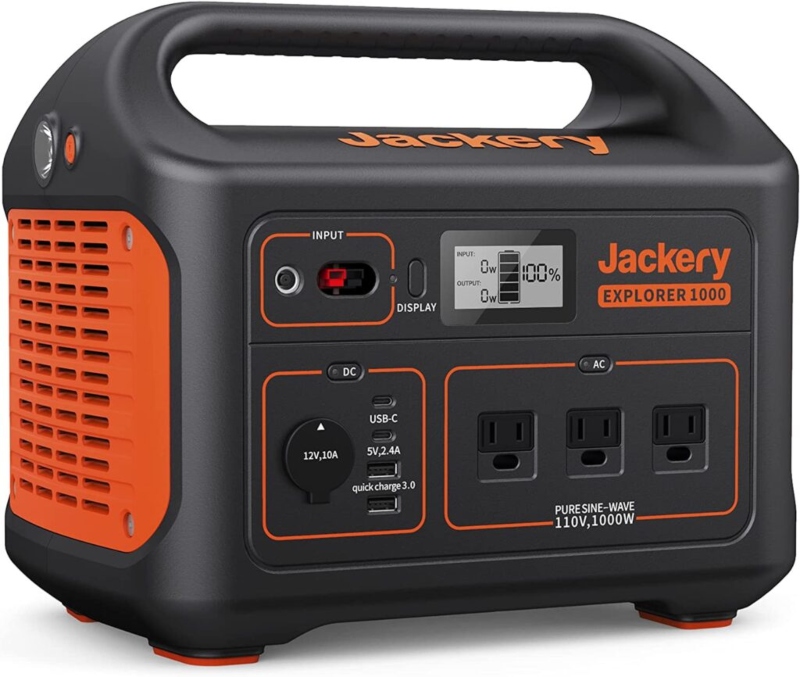
The best overall solar generator for van life is the Jackery Explorer 1000 Portable Power Station. Featuring a 1002Wh (46.4Ah) capacity lithium battery, it can output 1,000W of continuous power and 2,000W of peak power. This capability makes it perfect for powering multiple devices – even larger ones.
This solar generator has three standard AC outlets, a 12v DC carport, two USB-C ports, and two USB-A ports. So no matter what connection your device uses, you’ll be able to connect it to the Jackery Explorer 1000.
Besides these features, this generator also has a pure sine wave inverter and an LCD screen to display battery life and charge/discharge information.
The Jackery Explorer 1000 can be charged in 6.5 hours off of a solar panel with full sun. If you don’t have a solar panel or it’s overcast, your van can charge it in 11.5 hours; a wall outlet can charge it in 5.5 hours.
3. Goal Zero Yeti 400
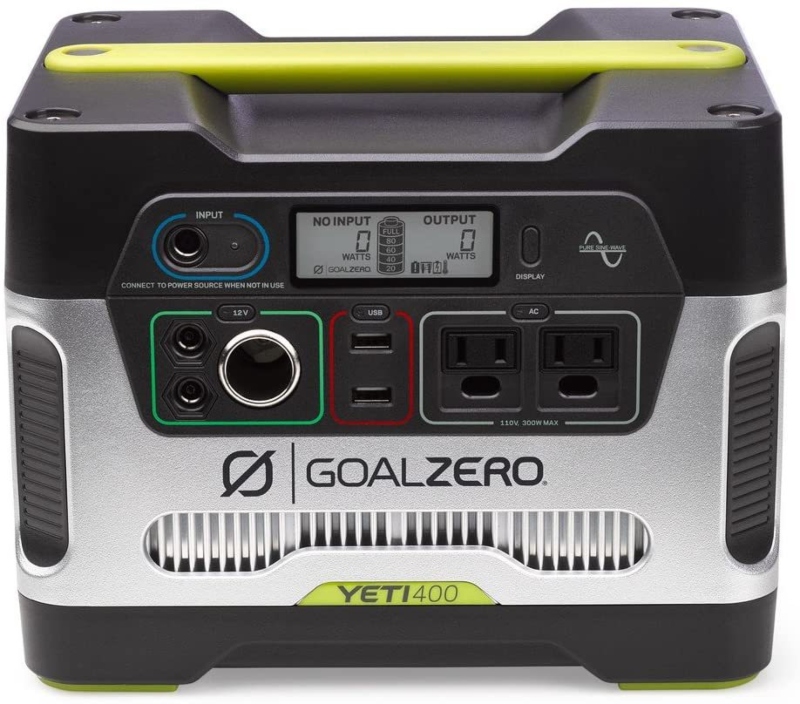
The best small solar generator is the Goal Zero Yeti 400. This generator has a 396Wh (33Ah) lead-acid battery with outputs of 300W of continuous power and 600W of peak power. This makes it perfect to power or charge smaller devices like your phone and tablet.
The Goal Zero Yeti 400 has two standard power outlets, two USB-A ports, and a 12v DC carport. It has a pure sine wave inverter and can even be chained with other 33Ah lead-acid batteries to provide longer runtime.
The Yeti can be charged in about 5 hours on AC power, 13 hours from 12v DC, and about 8 hours from a solar panel with full sun.
4. Bluetti AC200P
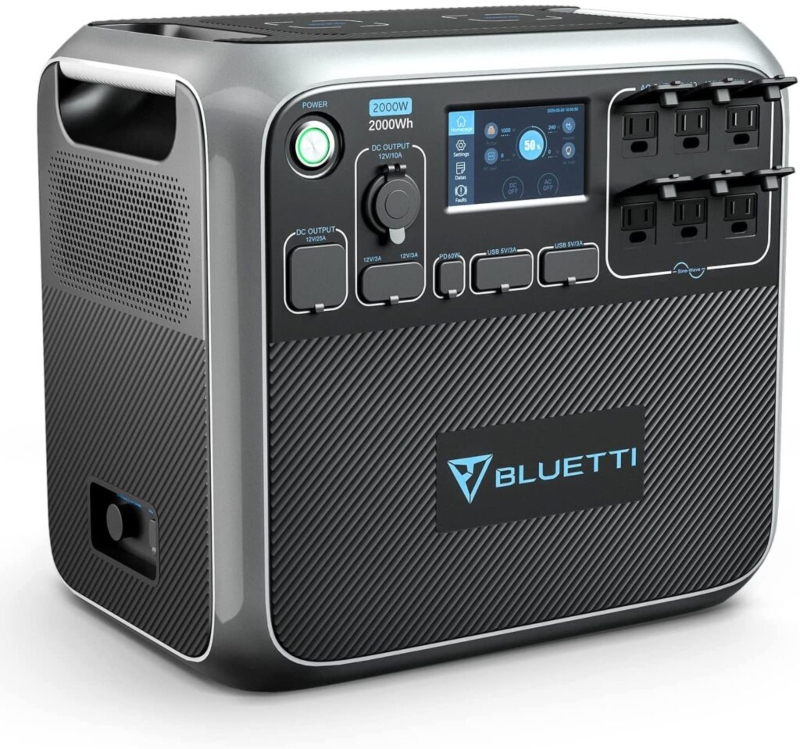
The best large solar generator is the Bluetti AC200P. If you need a high-capacity solar generator with high output, it’s hard to beat this Bluetti AC200P generator.
The Bluetti features a huge 2000Wh lithium battery and provides an impressive 2000W of continuous power and 4800W peak power. That’s enough power for almost anything, including power-hungry electronics like fridges and microwaves.
The Bluetti AC200P also features a pure sine wave inverter and many ways to connect your devices. It has six 110v AC outlets, four USB-A ports (5v/3a), one PD USB-C (max 60W) port, and three different 12v DC plugs (10A, 3A, and 25A). On top of the unit, there are even two spaces for wireless charging.
No matter what you need to power or how you need to connect it, the Bluetti AC200P will be up to the task. You can still recharge this generator quickly, especially by combining charging methods.
With combined solar and AC, or dual AC charging, the Bluetti AC200P can be fully charged in 2.5 hours or less! If you’re using single AC charging, it can charge in 4.5 hours; with solar panels, it can charge in 3.5 hours.
5. Point Zero Titan
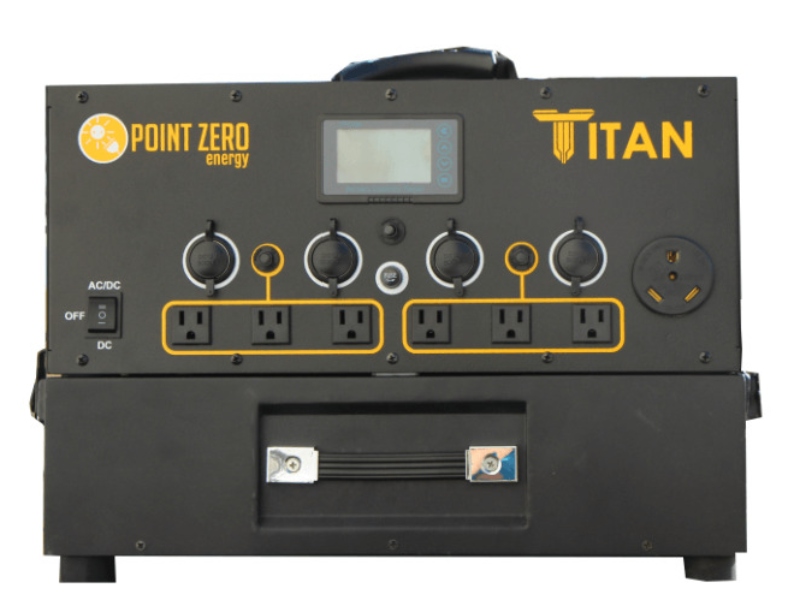
A bigger RV, like a Class C, will require more power. Perhaps the most powerful solar generator on the market is Point Zero Titan.
The Point Zero Titan provides a massive 3000W of continuous output with a max of 6000W peak power, plus it has a huge 2000Wh capacity lithium-ion battery. If that’s still not enough, the Titan’s capacity can be increased by connecting extra batteries.
The Point Zero Titan has a pure sine inverter powering its six standard 15A AC outlets, one 30A RV outlet, and four 12v DC carports. It can be customized with up to four dual USB-A ports or USB-C PD ports if you need more.
The Point Zero Titan can be charged fully in around 3 hours with the optional 25A AC charger despite the huge battery.
6. Rockpals 500W
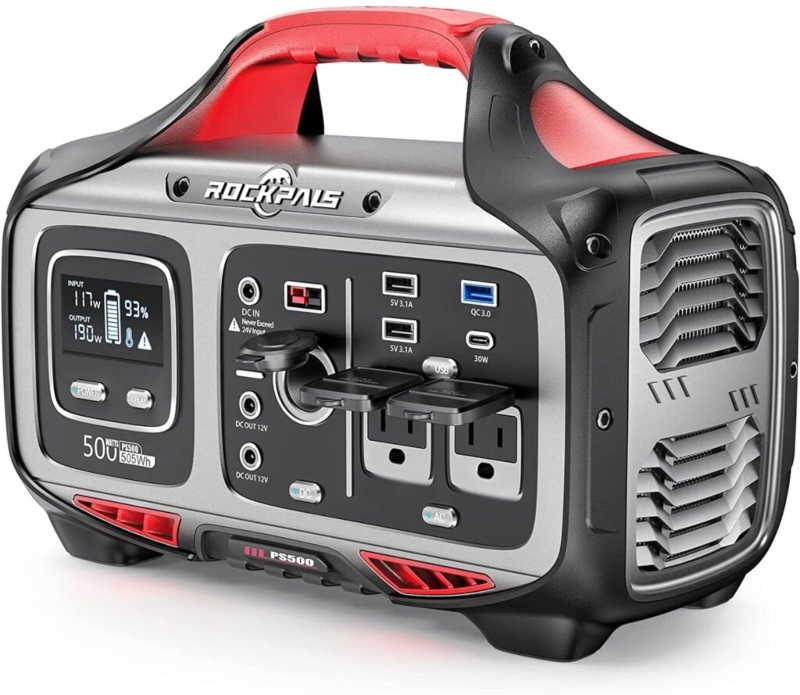
If you need a super portable solar generator for your nomadic van life, consider the Rockpals 500W. Weighing only 12.5 pounds and about the size of a boombox (12 x 9 x 6.1 inches), this tiny solar generator still packs a punch.
The Rockpals 500W has a 505Wh capacity lithium-ion battery and provides 500W of continuous power with 750W surge power. This makes it perfect for powering or charging smaller devices like phones, laptops, and projectors.
The Rockpals 500W has two pure sine wave 110v AC outlets, one 12v/10A carport, two 12v/5A DC ports, two USB 3.1A ports, one USB-A 3.0 quick charge port, and one USB-C PD port. The battery can be recharged in 4.5 to 7 hours using just solar, and 7 to 8 hours from a wall outlet. The charging methods can also be combined for faster charging.
Are Solar Generators Worth the Money?
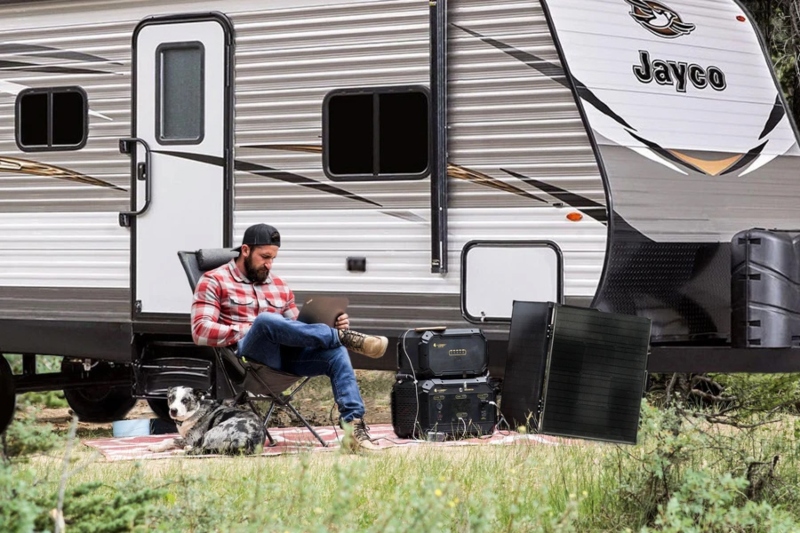
Is a solar generator right for you? There’s a good chance the answer is yes!
Solar generators for van life are a convenient and eco-friendly way to power your devices. While they aren’t cheap, they can save you the hassle of planning and installing a full solar system.
Even without a shore power hookup with a solar generator, you can power your devices. And with solar panels, you can charge them anywhere you have sunlight.
But don’t think you are limited to just solar panels as suggested in the name. In fact, a solar generator can be charged via AC power from a wall outlet or DC power directly from your van’s batteries. That means there are plenty of ways to keep your generator charged.
Solar generators for van life come in various sizes. Whether you just want to charge a few devices or want to power appliances and tools, there’s a solar generator that can meet your needs. Different generators will have different battery sizes, outlets and ports, and output wattages, so you have plenty of options.
Whatever solar generator you choose will take your van life adventures to the next level. No matter where you go, your generator will be there to give you power anytime you need it.
1. 5 Best Portable Solar Generators for RV Life and Camping
2. 10 Best Portable and Quiet Generators for Camping
3. Can Solar Panels Really Power an RV Air Conditioner?
4. 7 Best Fridges For Van Life
5. 25 Must-Have Campervan Accessories
About The Author
Jennifer and Kendall are avid RVers and part-time van lifers who share their years of experience both as full-time RVers and nomads through writing.
Jenn and Kendall have explored Canada, the USA, and Mexico while RVing and living full-time in all 3 countries.
They have been fortunate to work not only as part of the RVBlogger team but also with RVLife, DIY RV, Camper Report, RV Magazine, Rootless Living, Vanlifers, and more.
They have also shared their RV experience through DashboardDrifters.com and are the founders of RVSpotDrop, a web service for full-time RVers.


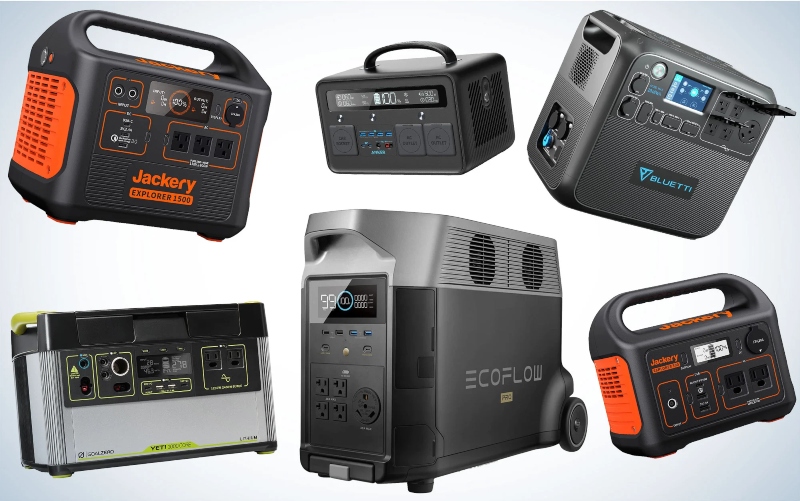
Hi, do you have any opinions on EcoFlow versus the ones you posted about? Thanks@